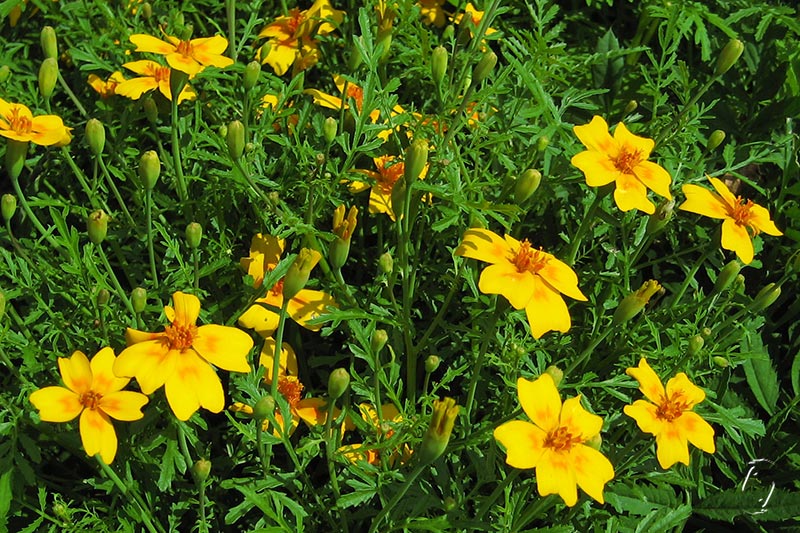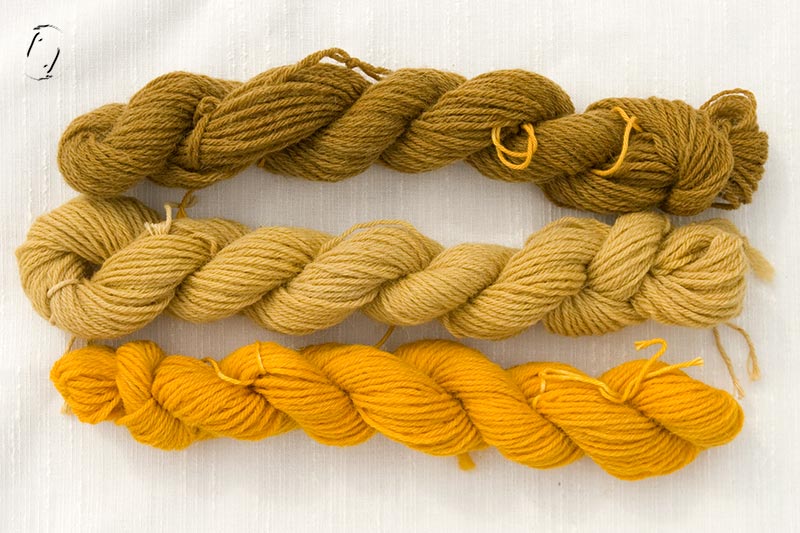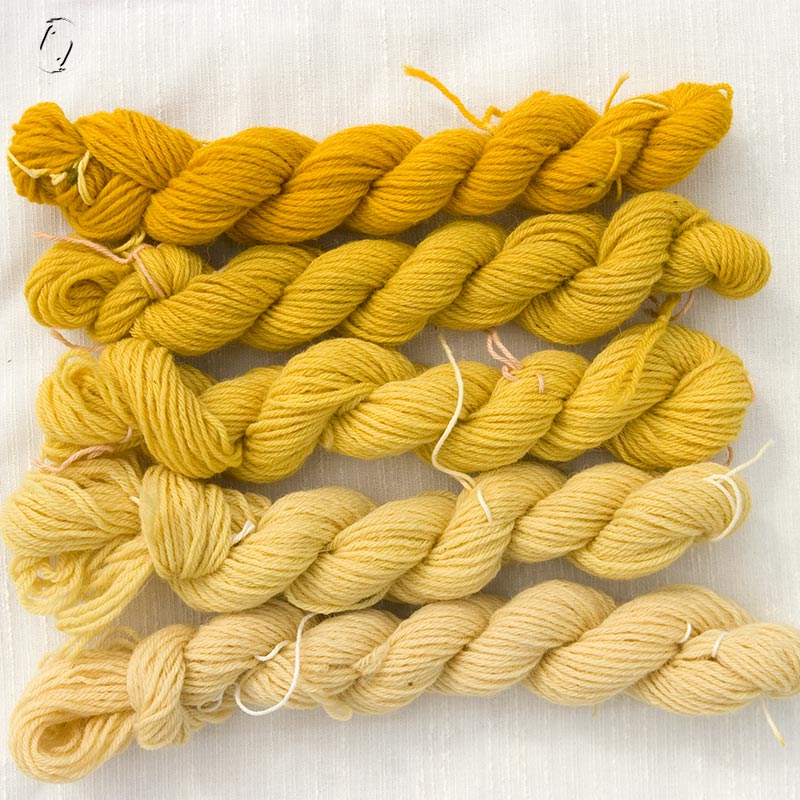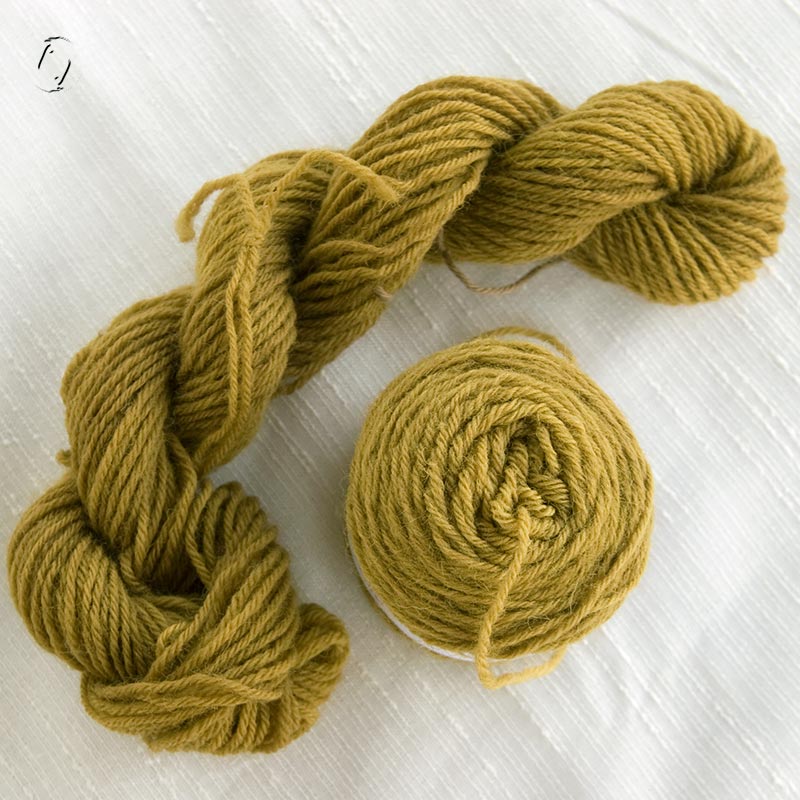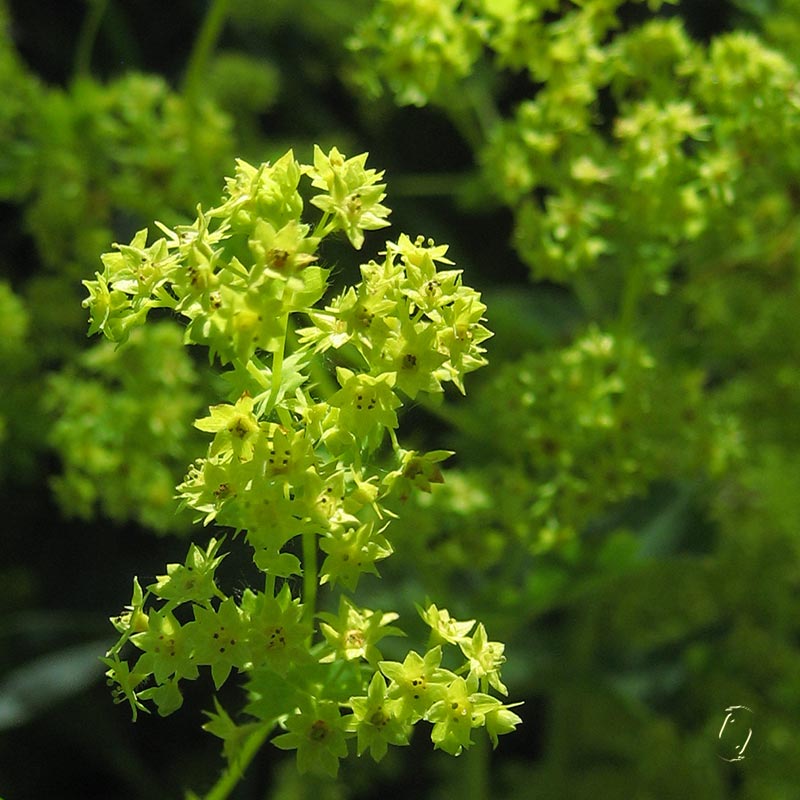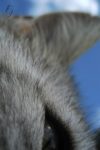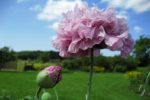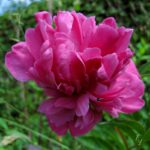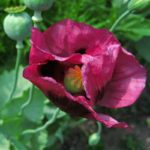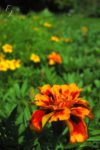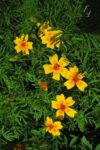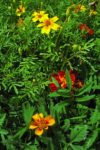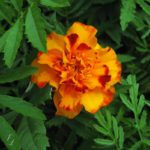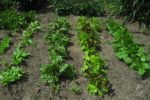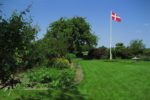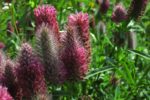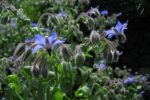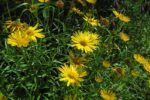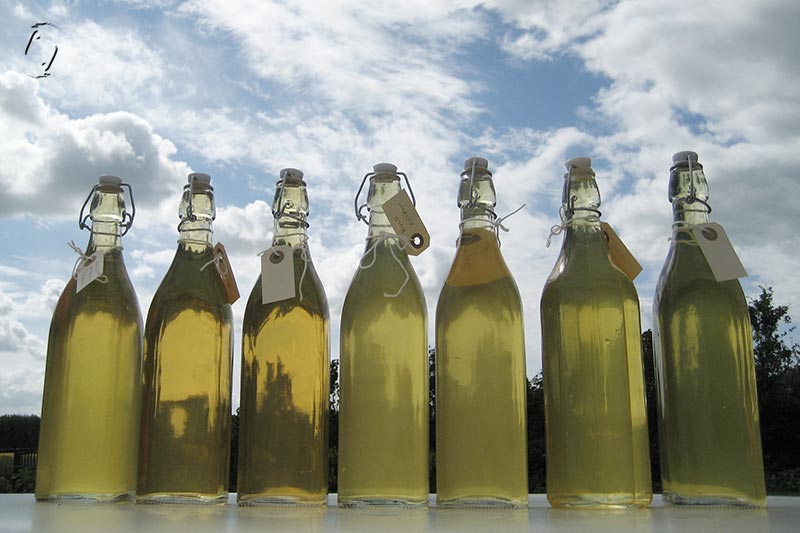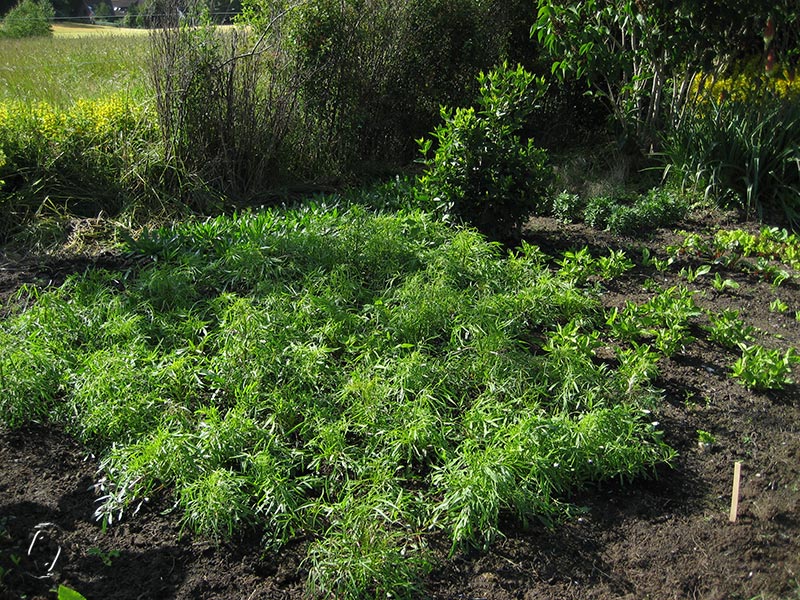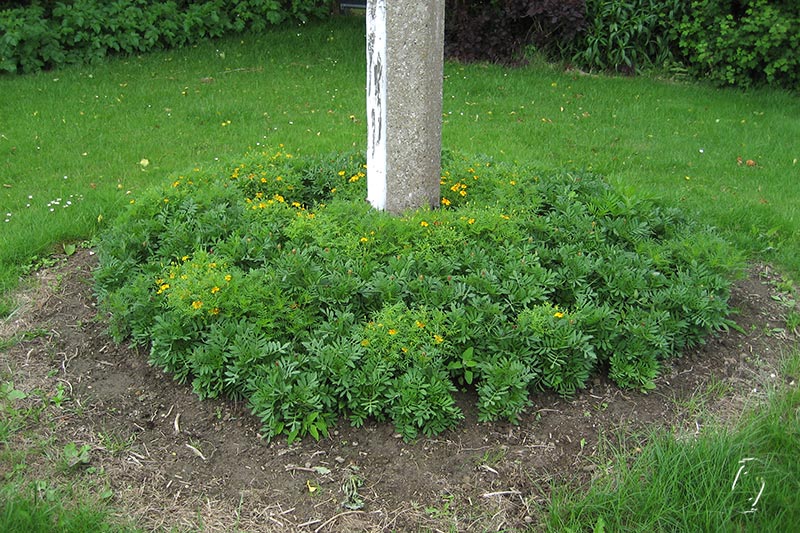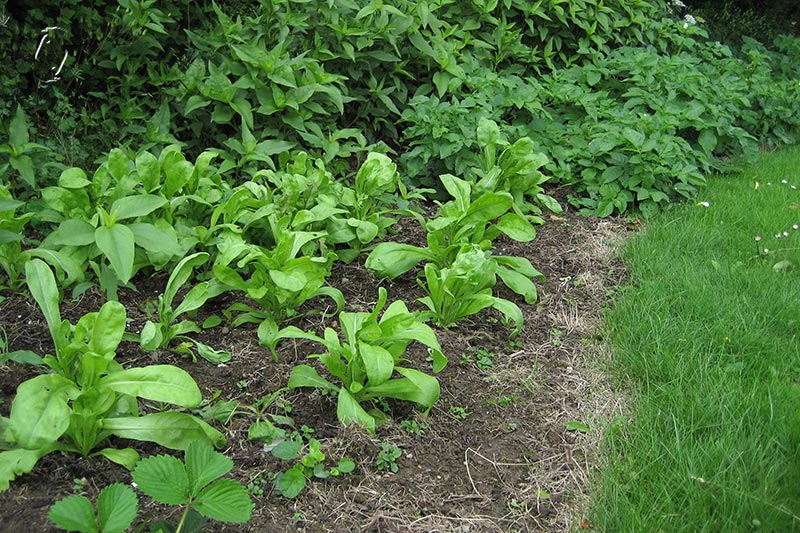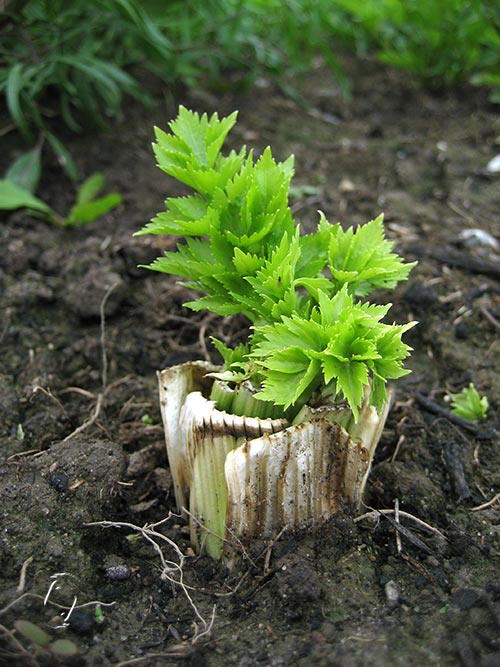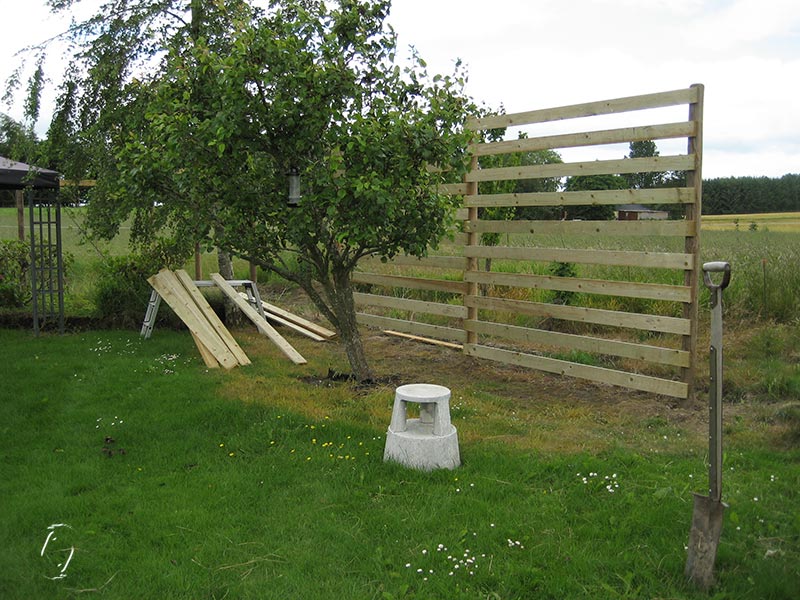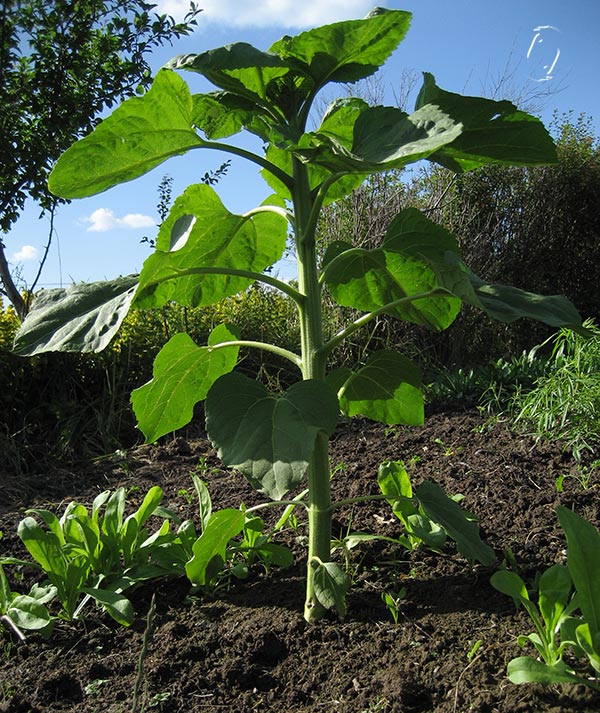Having used double up plant to yarn the first time, I wanted to test the dye properties at 1:1 ratio. I used the tagetes tenuifolia.
I did 1 alum, 1 rhubarb and then 1 copper mordanted in a pot of its own. And yes, it’s different, but not green like the first year, I must have really overdone it back then. Now I’m intrigued as to actually getting green on purpose.
Rhubarb: you disappoint me (again). It may be that it only works in some plant combinations, but frankly then I can’t be bothered. I also have no succes with it on cotton, but more on that later.
These three skeins didn’t even get simmered, I just put them in the warm dyebath to soak. So I decided to test how far I could go on the exhaust, one skein at a time. 5 more skeins, so that’s 200 g yarn from 75 g of flowers.
Tagetes igen igen
Sidst brugte jeg dobbelt op af plante i forhold til garn, så jeg ville lige teste en gang 1:1. Samt det rabarberbejdsede garn og kobber i en gryde for sig.
Denne gang fik jeg ikke grøn fra kobber som det første år, så nu tænker jeg jo på, hvordan man får det med vilje. Rabarber er igen meget skuffende/kedeligt, jeg tror ikke det er noget jeg vil bruge krudt på igen.
Efter 3 fed farvet 1:1 ville jeg så teste hvor meget ekstra farve der var i, så jeg blev ved med at putte garn i, et fed af gangen indtil det blev meget lyst. 5 stk. blev det til, så det er i alt 200 g garn til 75 g blomster! Jeg brugte Appelsintagetes denne gang.

